Malaysia: Luxury on a Budget
Disclaimer: Some links on this page may be affiliate links. If you purchase anything through them, I will receive a small commission at no extra cost to you! Further details in the Privacy Policy.
Visiting Malaysia – A Summary
If visiting Malaysia isn’t on your bucket list, it certainly should be. Few countries in the world are able to offer a well-rounded package as effectively as Malaysia.
Belize has good beaches, but scores minus points for safety. Singapore offers luxury city landscapes, but it isn’t cheap at all. Costa Rica is a fantastic country to spot wildlife in, but lacks cities worth visiting. On the other hand, Malaysia has it all.
Read on if you want to know a little about the amazing Batu Caves, the great city of Kuala Lumpur and spectacular nature on the island of Borneo. In this post I will be describing these places and offering honest opinions on them.
Hopefully by the end you will be booking flights and visiting Malaysia in no time!
This is one of the safest countries in Southeast Asia, so it’s easy to sit back and relax during your time here. Malaysia is also home to some of the safest cities in the region.
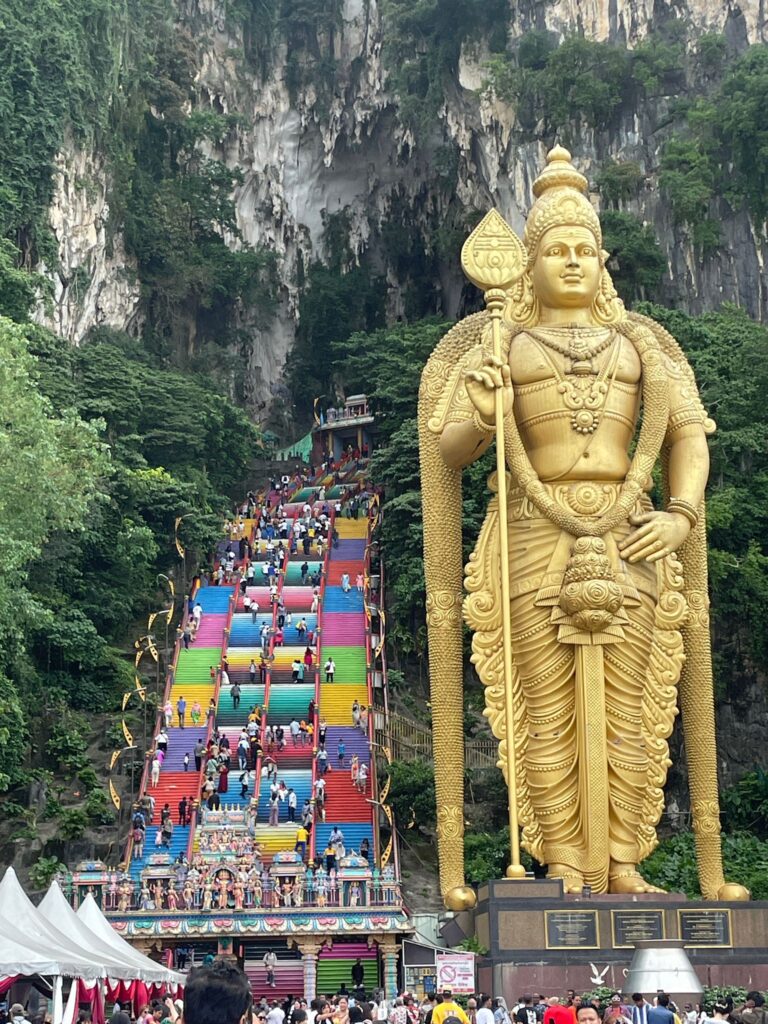
An Early Arrival
Malaysia was the final stop of a month-long trip to Bali, the Philippines and now here with my girlfriend. We had two full days together before she would be heading home, and we were keen to make the most of it.
We arrived in the early hours of the morning, long before the cheap and comfortable KLIA Ekspres train started running for the day. Kuala Lumpur International Airport is over 60KM from the city centre, and even further from the popular Batu Caves in the north, meaning the only viable option was to use the taxi app Grab. The taxi cost around $18 which was pretty reasonable considering the distance and the fact we were travelling during the graveyard hours.
We had accommodation booked near the Batu Caves and eventually arrived around 3am.
Time for a quick sleep ahead of a day of exploration.
The Batu Caves – An Absolute Must Whilst Visiting Malaysia!
The Batu Caves are a sacred site with several Hindu Temples outside and within them. They are famous for their colourful steps and giant golden statue which makes them a very popular Instagram spot.
To our surprise, the caves were free to visit. Apparently this is not true of all caves within the complex, however we never found a spot which asked for payment.
Although being a sacred site, you do need to dress modestly, which generally means ensuring your shoulders and knees are covered as a bare minimum.
The caves were incredible. We made it up the colourful steps into the caves themselves where Hindus based within the temples would carry out religious rituals.
Several souvenir stalls stood to remind us of the unusual blend between important holy site and major tourist attraction. Unlike in some parts of Asia, we weren’t pestered by merchants attempting to sell us their wares.
As we made it to the top, we spotted some monkeys which have made the caves their home. The caves are in the side of a large cliff covered in trees which creates a perfect habitat for primates.
We slowly came down towards the bottom and decided to explore one of the Hindu temples at the foot of the colourful staircase.
This is where things took a turn for the worse…

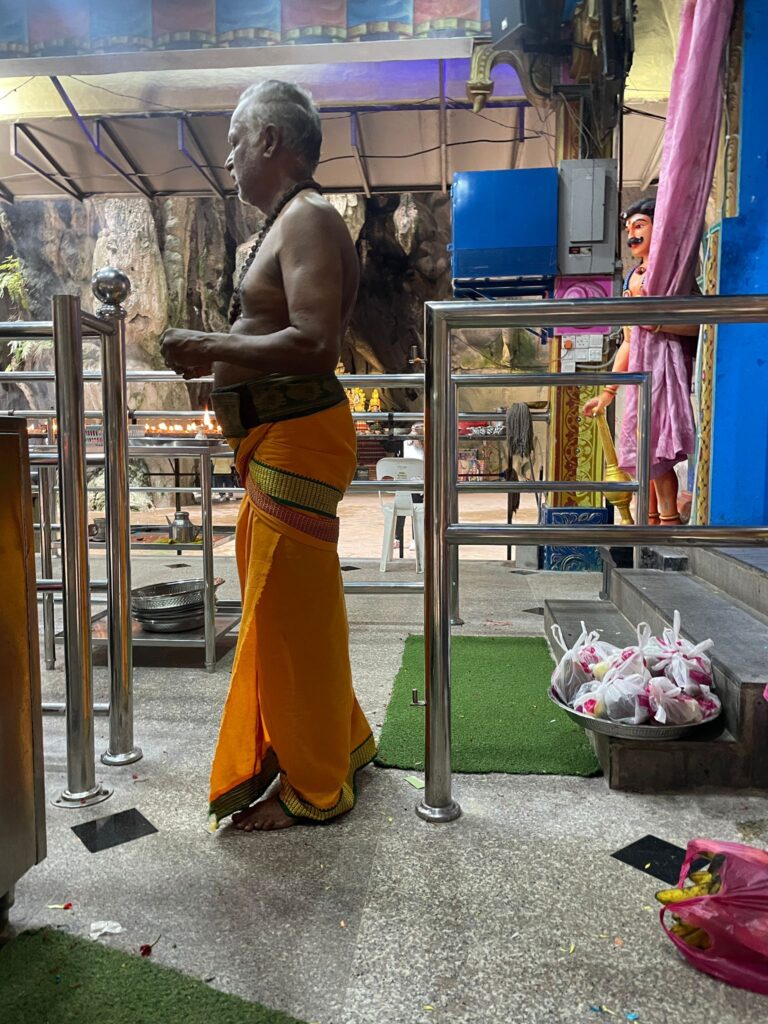
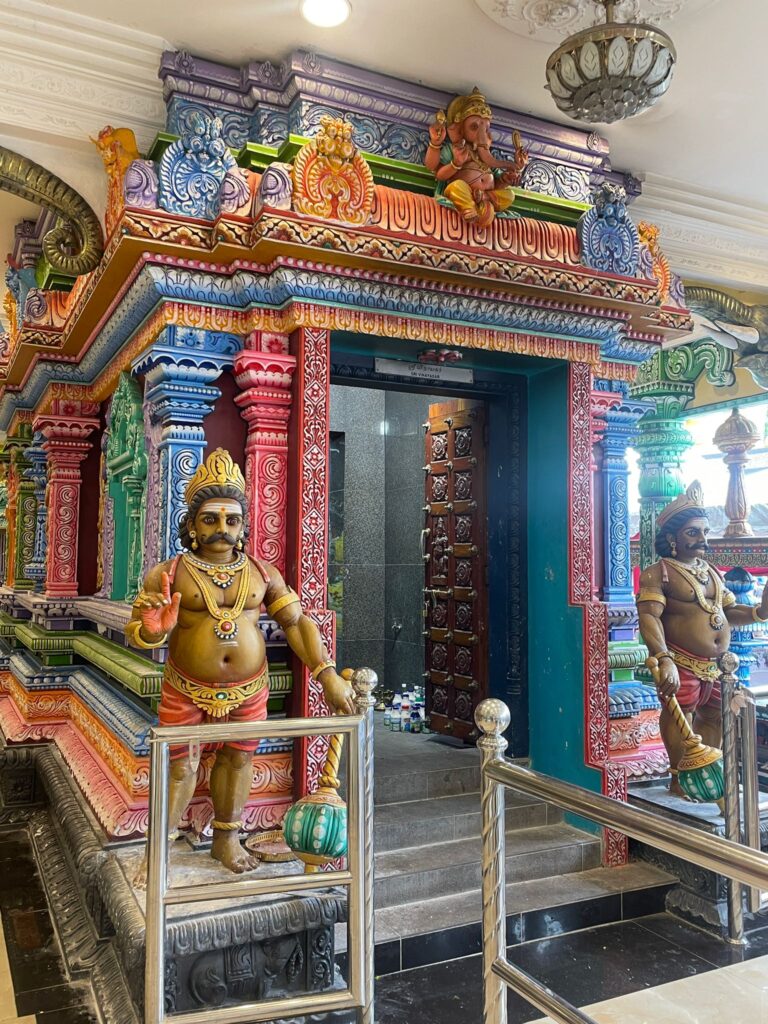
Defeated by a Doorframe
Doorframes in Asia are built at a height suitable for locals. And Asians are generally much shorter than Europeans. You’ll certainly be looking a while if you’re searching for an Asian over 6 ft tall.
I walked over the step into the temple, without noticing the metal beam above, and WHACK!
Smashed my head with considerable force into the metal.
Suddenly I was heavily dazed and went down to the ground. Locals dragged me inside the temple, got me to sit down and offered water whilst I felt like someone who had gone from completely sober to 15-beers deep within a split second.
My girlfriend who was standing further back had not realised what was going on straight away and found it amusing that I appeared to be taking part in a Hindu ritual upon entering the temple.
She soon realised this wasn’t quite the case and became concerned upon realising what had happened.
She asked several questions to make sure my brain hadn’t been impacted by the blow.
Fortunately my cognitive abilities were unaffected, and I was able to walk away with nothing more than a sore head, which took four days to clear up.
Moral of the story: For my fellow Europeans, and others carrying a little extra height, take extra care in Asia! Even more so for our giant friends from South Sudan. Visiting Malaysia and other Asian countries can be tricky when over 6ft!
Central Kuala Lumpur
We headed back to rest for a while before taking a taxi to Kuala Lumpur’s city centre where we were staying for our last two nights together.
Relaxing and swimming ensued, the latter cut abruptly short when I felt a minor electric shock.
We thought this was odd given the dry weather, however seconds later a clap of thunder bellowed out and we made a hasty exit from the pool, just as the rain began.
In the evening we found a spot for cocktails during happy hour in Changkat, Kuala Lumpur’s primary drinking district and retreated for our last day together in Malaysia.
Colonial Kuala Lumpur and Laws to Adhere to Whilst Visiting Malaysia
This started with a free (tips-based) walking tour of Kuala Lumpur’s more traditional parts. Others pulled out of the tour meaning we had a private tour of the city with our guide for 4 hours, an hour more than scheduled.
We learnt a lot about the country during the tour. From the political hierarchy to the kings, the states, the languages and the three dominant ethnic groups (Malay, Chinese and Indian) which make up the country.
Malaysia has two legal systems (civil and sharia) with the sharia law applying to Muslims and civil law relevant to everyone else. Anyone who marries a Muslim has to become a Muslim and follow the sharia law. It is never possible to reverse this process and become non-Muslim again.
Despite the reputation Muslim countries have for being very strict, this isn’t really the case and no one will have problems whilst visiting Malaysia assuming they behave in a civilised manner. Whilst many Malay women wear hijabs, there is no issue with women who choose to wear whatever they wish.
Alcohol is legal in Malaysia although it is not as widespread as in Europe. You still won’t have any issues finding a drink here, but be sure to behave and not cause any trouble.
I’ve done 20+ walking tours across the world, mostly in Latin American cities with others in Europe and Jordan. Admittedly the historical areas of Kuala Lumpur weren’t the most fascinating. Personal opinion of course. However you may be interested in checking them out if architecture and colonial history is your thing.
Our guide was very knowledgeable however and gave us a decent understanding of how Malaysian society works.
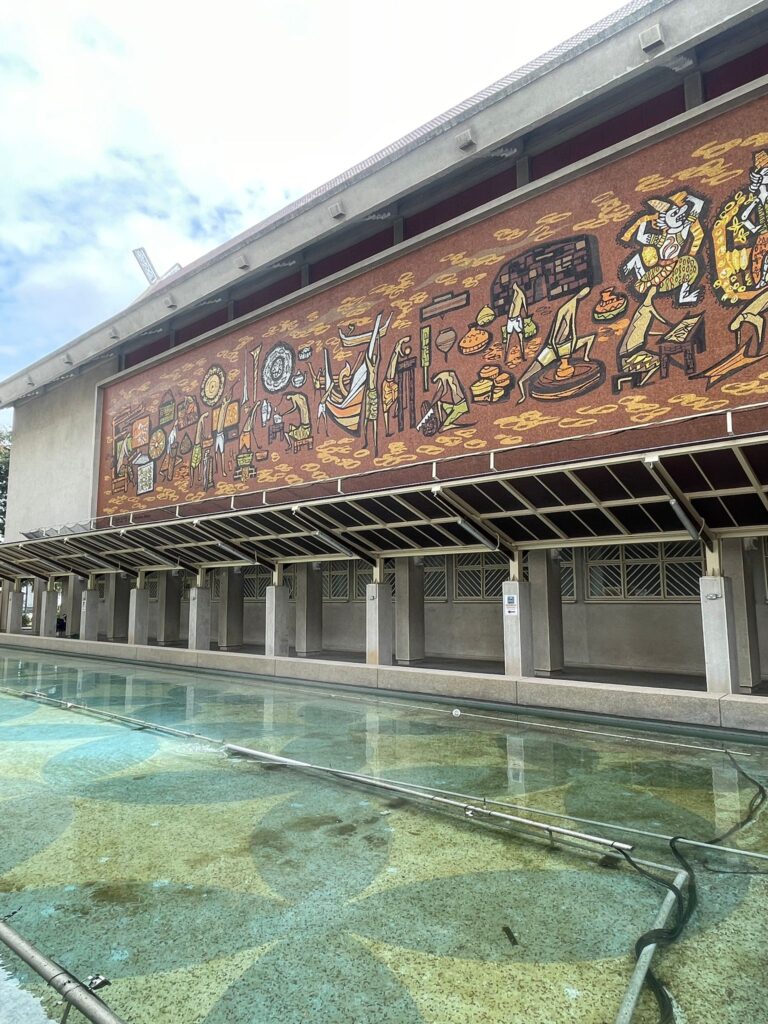
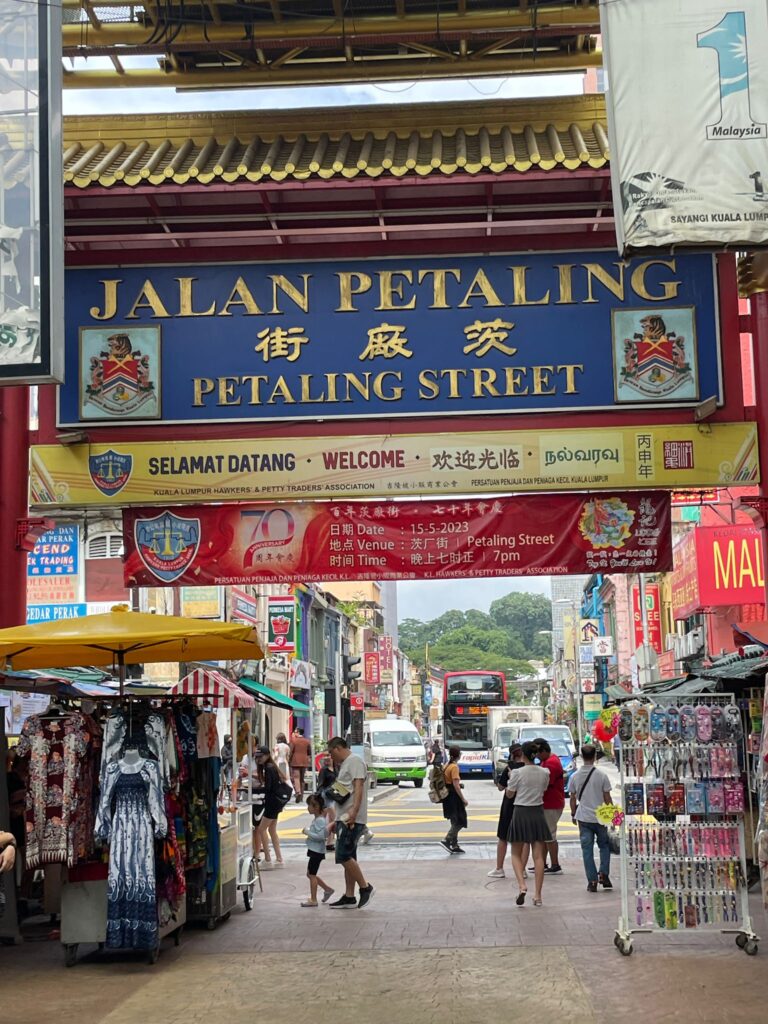
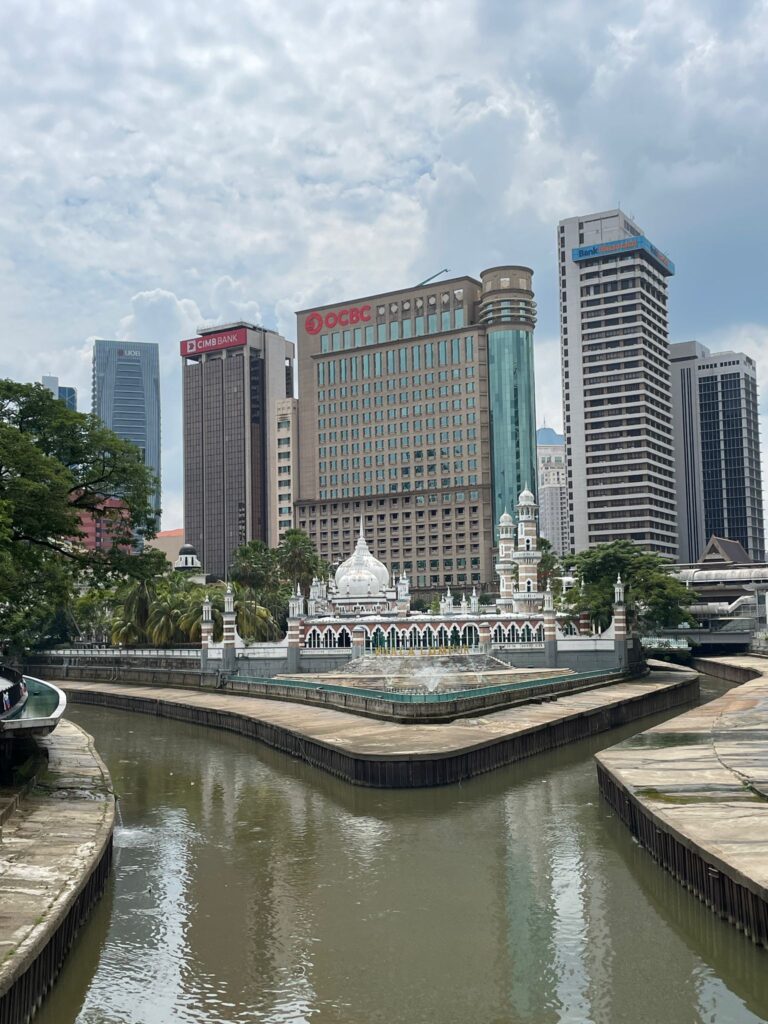
Petronas Towers: Kuala Lumpur’s Most Famous Landmark
By mid-afternoon it was time to take a taxi to see Kuala Lumpur’s most famous landmark – the Petronas Towers. This a probably the first place that comes to mind for anyone thing of visiting Malaysia.
At the time of writing, these are the tallest twin towers in the world. A giant shopping mall stands between them with just about anything you could possibly want inside.
On the advice of our guide from the tour, we went to where water lies outside the towers to take some photos before heading back to rest.
The towers are okay to see during daylight, but look much more impressive at night when the lights come on. There is also a light show outside where the fountains will also light up after dark for a short spectacle. If you’ve seen light shows in Dubai before, this is pretty unimpressive in comparison. But otherwise it’s worth checking out. The many kids who attended seemed to enjoy it at least.

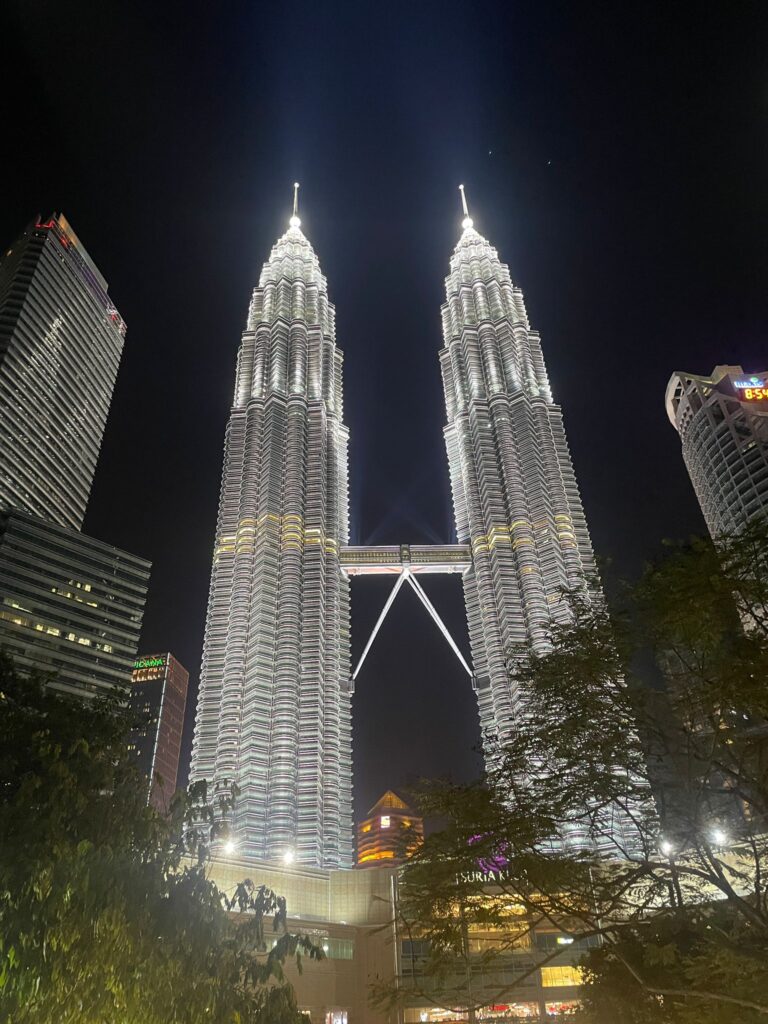

Kuala Lumpur’s Street Food Mecca
Our final evening together was spent exploring Jalan Alor, a popular street food spot which our guide had recommended.
On the right side of the street, many stalls were selling local food, mostly meat, juices, fruits and the most notorious product of all:
The durian.
The durian is infamous for its pungent smell which can be experienced from up to 50ft away. Whilst the fruit itself is very popular in Malaysia and neighbouring Singapore, it is banned on many transport systems and other public places across much of Southeast Asia.
On the left side of the street were small outdoor restaurants selling mostly Malaysian or Chinese cuisine.
The food on the street is sold at tourist prices, above what the locals pay away from the crowds. However it is still very cheap in comparison to what you may expect elsewhere.
On the end of the street as we headed back, were two Russian “begpackers”. For those not familiar with this term, it generally refers to travellers heading to poorer countries and shamelessly asking strangers to fund their travels. Sigh… You can read more on this phenomenon here. Be better than these guys please.
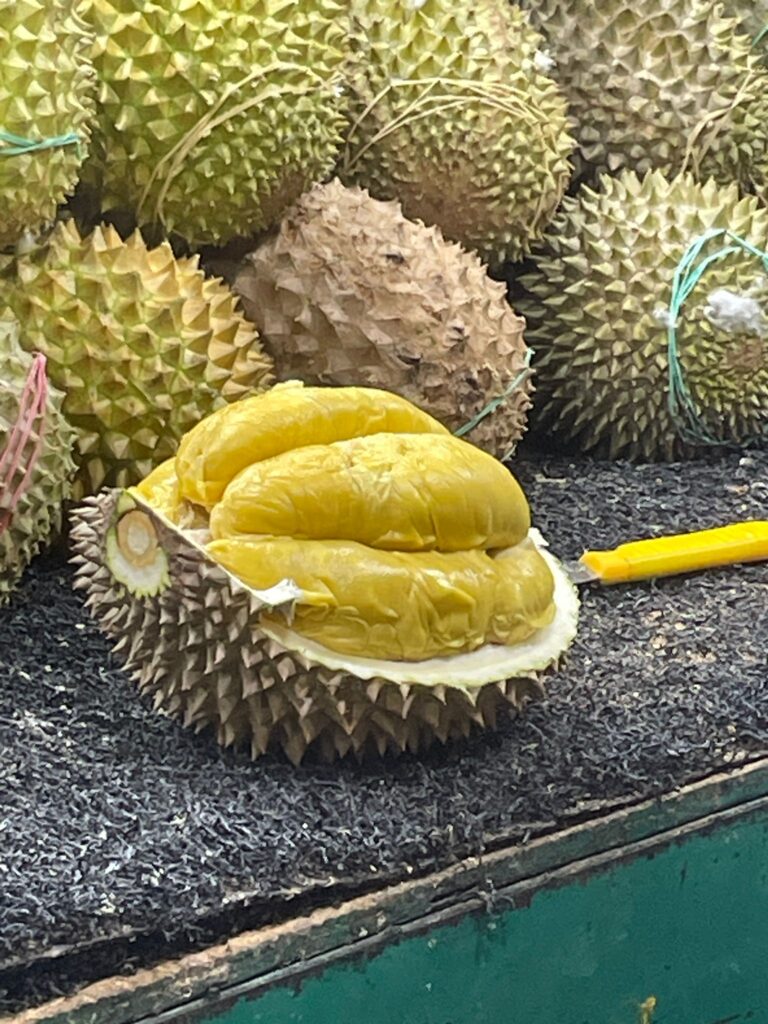
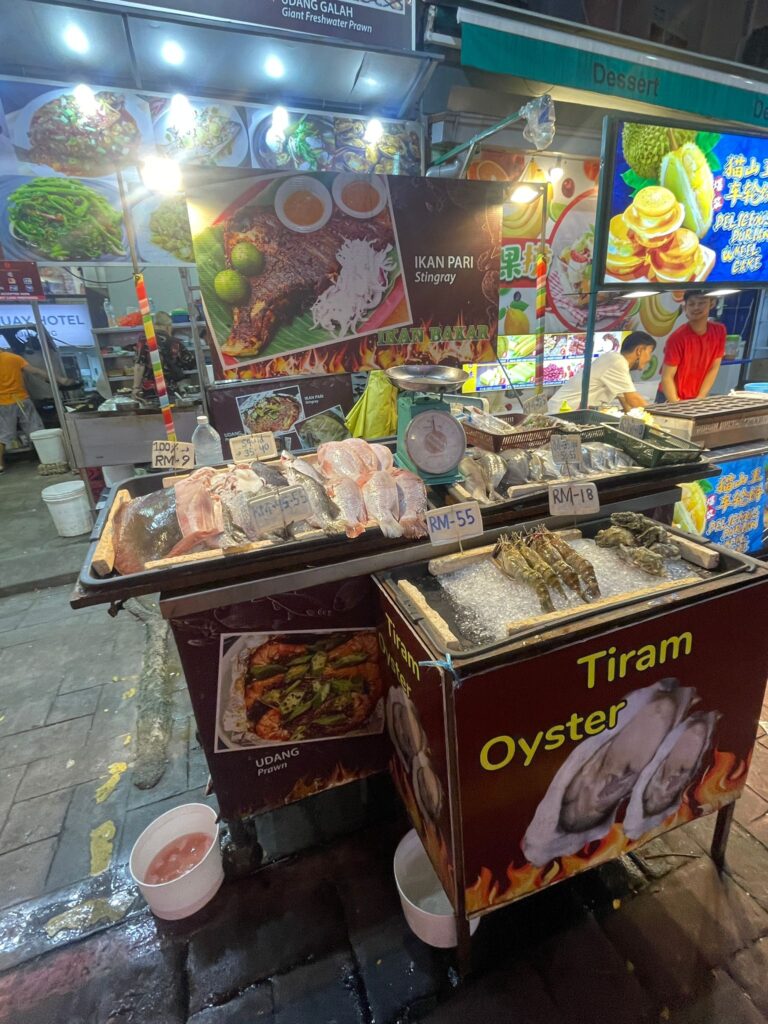
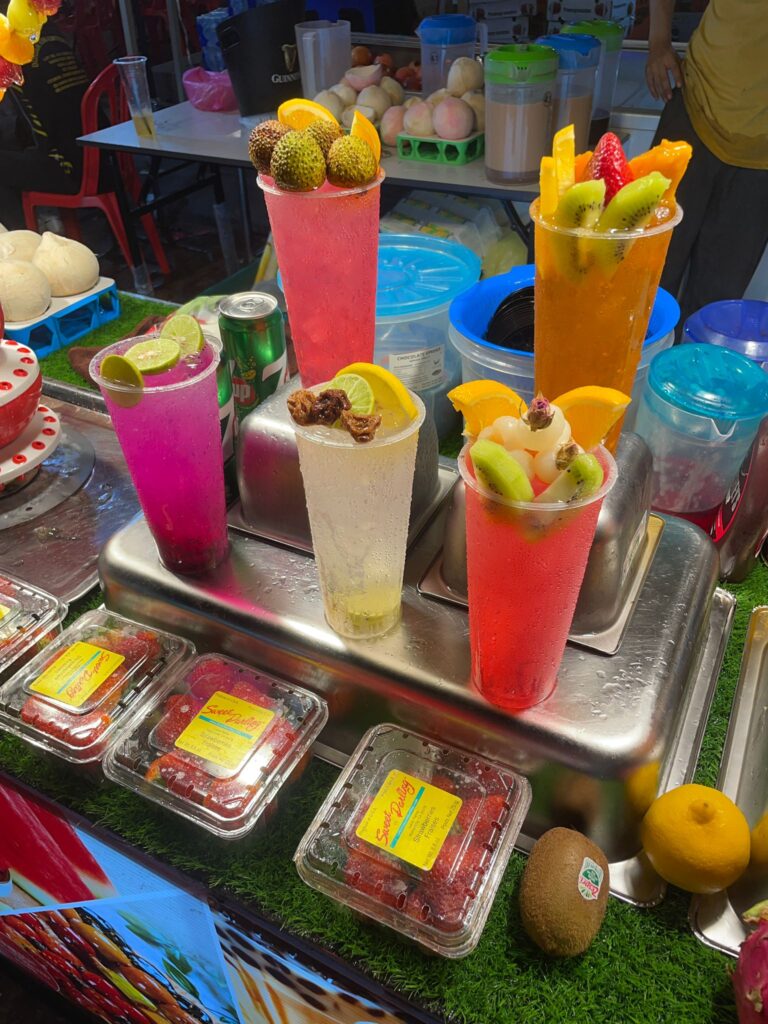
Malaysian Borneo (This Should be an Essential Stop Whilst Visiting Malaysia)
The next day it was time to say goodbye to my girlfriend. We headed to the airport before disaster struck, in a story I’ll save for another post. After many hours of misery, my girlfriend headed home. I took a flight to Kuching, the capital of Sarawak which is the Western of two states (alongside Sabah) which make up Malaysian Borneo.
I arrived just ahead of sunset by the river, before retreating for the night to plan some adventures in nature.

A Highlight of Borneo – Bako National Park
Exhausted from the previous day’s events, I got up late, and had planned very poorly. I headed to the famous Bako National Park without realising it was accessible only by boat and the boats were quite expensive when you didn’t have someone to share the cost with. Whilst visiting Malaysia, be sure to plan a little better than I did!
The cost was 100 Malaysian ringgits ($21) each way. Fortunately I arrived at the same time as a young couple, which meant I only had to pay 33 for the journey there, although it was early afternoon and the last boats back were around 4pm. With no one else likely to arrive and no time to waste I had to pay the entire 100 ringgits for the return journey.
It is possible to stay overnight in the park, as the young couple I went out with were doing, however the accommodation needs to be booked a while in advance, especially in July which is peak season.
Another example of how spontaneous travel can occasionally backfire.
I soon arrived at the park via boat. You have to walk through (crocodile-infested) waters to get to the beach from the boat. An unexpected surprise and I didn’t have a towel or appropriate footwear. This meant taking my shoes and socks off, and putting them back on with wet feet. Great start.
Then I registered at the front desk and started trekking through the jungle.
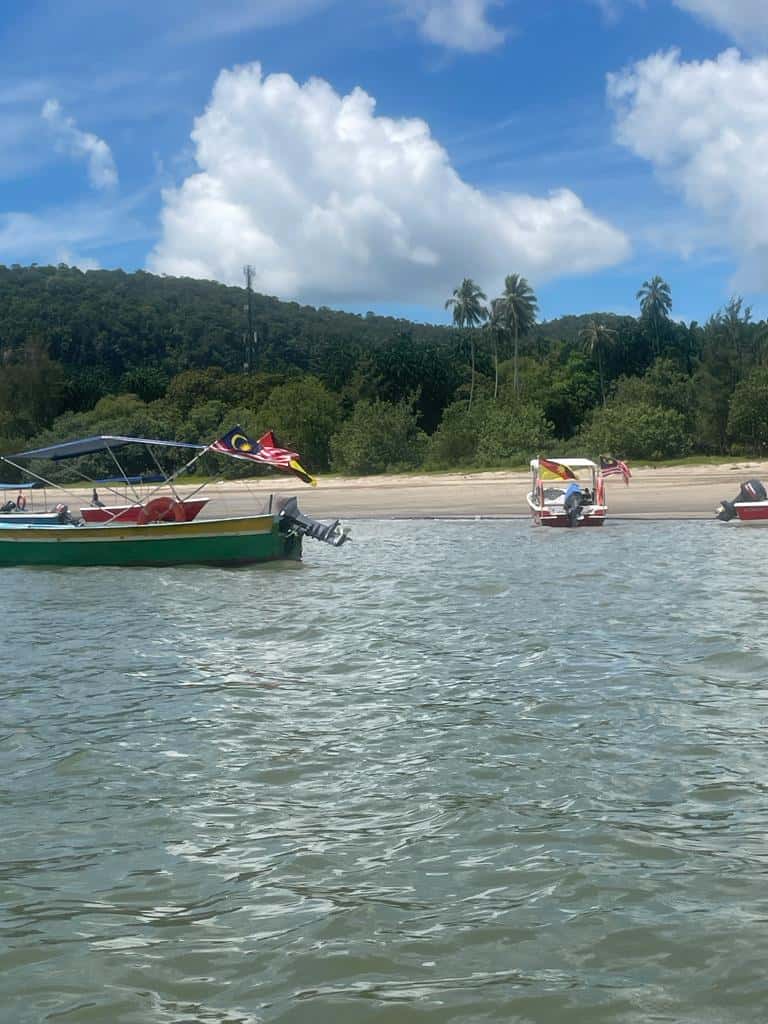

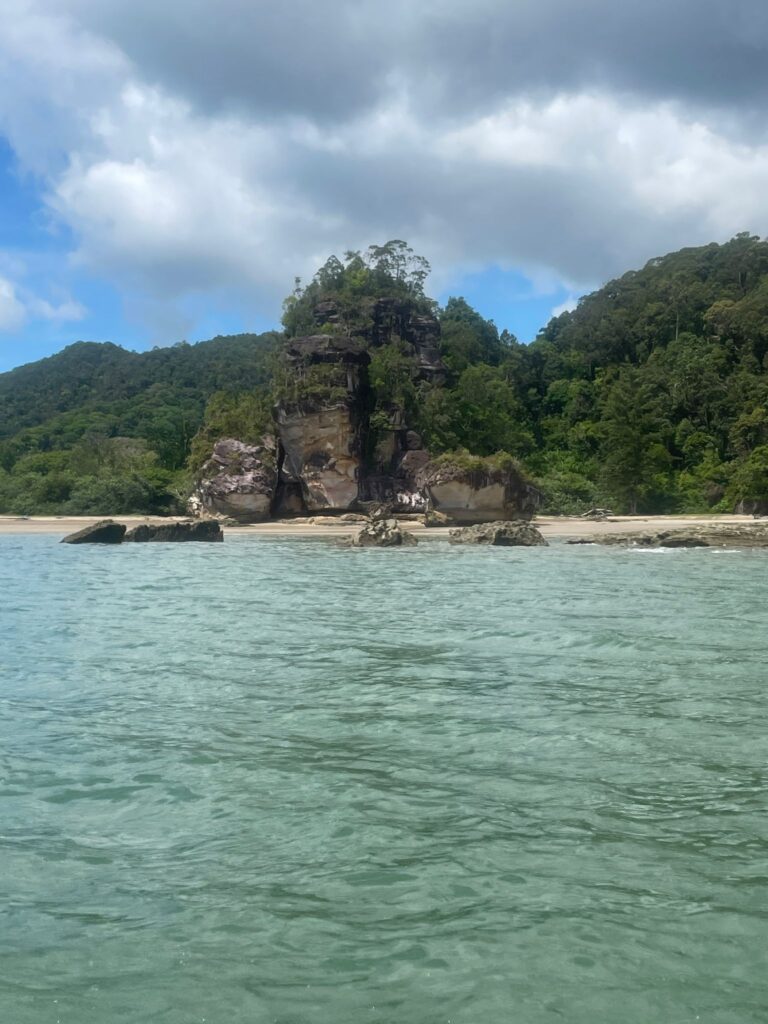
Spotting Wildlife in the Jungle
This jungle was home to many snakes, bearded pigs, crocodiles, frogs, lizards and monkeys including its star attraction. The peculiar proboscis monkey, famed for its giant nose, lives here.
After 1.5 hours I made it to a secluded beach on the end of one of Bako’s designated hiking trails.
Despite hearing everything I saw little on the way. Just the remains of a dead snake, a few hermit crabs and a dragonfly.
The beach itself was more interesting with a monkey eating apples, much to the amusement of a Chinese tour group. There was also what I assumed was a stingray, before an Instagram follower reliably informed me it was a stonefish crab.
The return journey proved slightly more fruitful with several monkey sightings including the star of the show, the proboscis monkey. Although it was too high up to take any pictures.
A salamander and a frog were also amongst the creatures spotted. Many poisonous frogs live here, so I was reluctant to get too close to the latter.
Eventually I made it back to the entrance point, walked back through the crocodile-infested waters (thankfully nobody was home) and returned to the boat to head back to Kuching.
Would absolutely recommend staying in the park for multiple days, arriving as early as possible and doing several trails to make the most of this spectacular nature spot. A true highlight of visiting Malaysia.
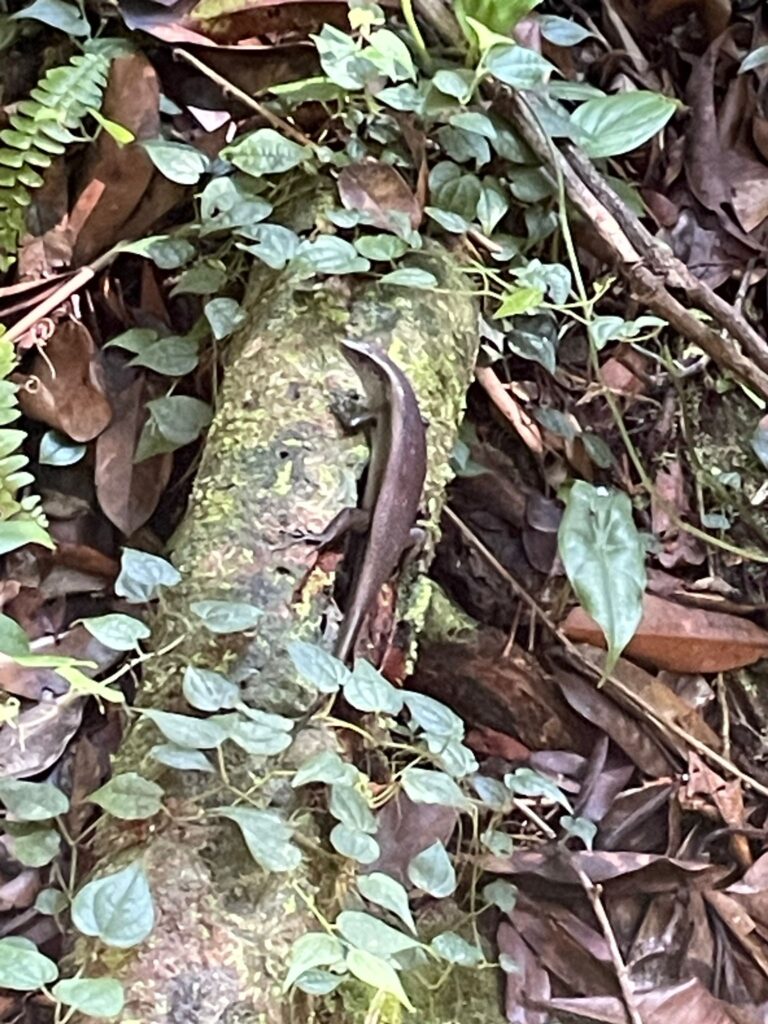
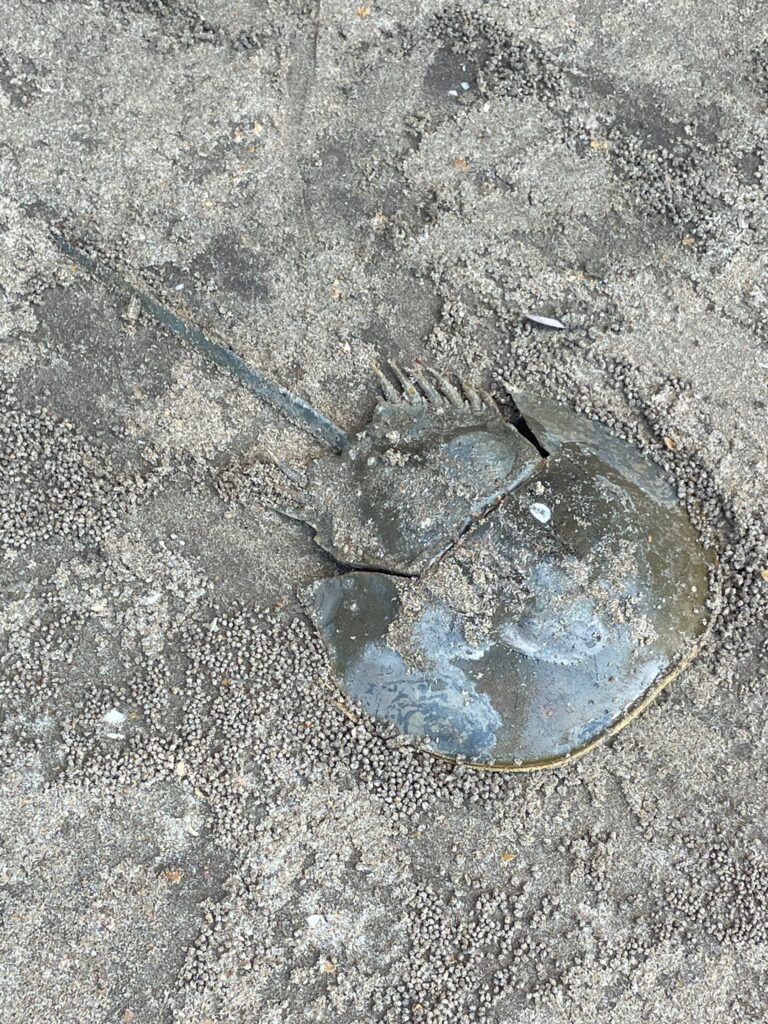
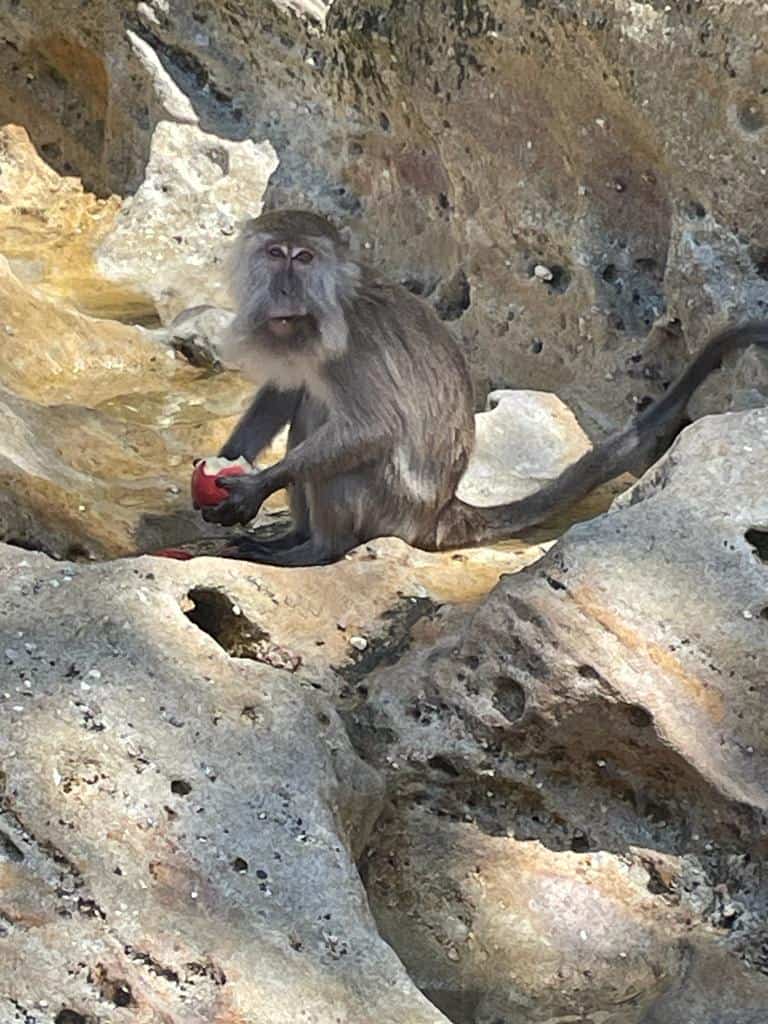
Semenggoh Orangutan Sanctuary – The Best Place to Spot Orangutans Whilst Visiting Malaysia
Day two in Kuching involved a trip to the famous Semenggoh Orangutan Sanctuary. It is no zoo, and there are no guarantees of spotting orangutans here. Although they know when the staff offer food, which means the chances of seeing them are high.
The sanctuary opens twice a day for two hours at a time. If you don’t see any orangutans in this period, that’s tough. Although you can return in the afternoon on the same ticket if you bought a ticket to the morning visit. Tickets cost RM10 (around $3) for adults and half that price for children.
After an hour of waiting, the first orangutan started to emerge. Staff ensured a large distance between both primate and people, mostly for our safety since these creatures have been known to fight without warning.
A second eventually came as the first disappeared and ate bananas in front of us.

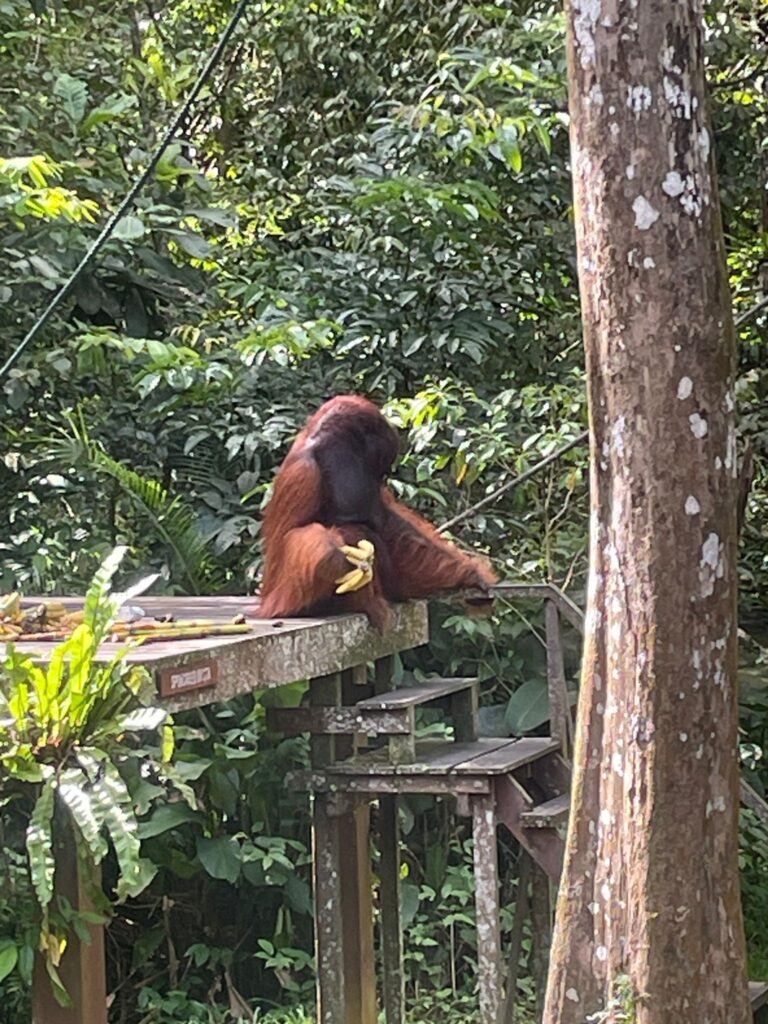
A Manufactured Experience
However the sanctuary overall was a little underwhelming.
It certainly isn’t an authentic nature experience, with the orangutans being baited by sanctuary staff and 50-100 tourists surrounding them as they eat.
If you don’t care about authenticity and just want to see orangutans, this place is perfect. You won’t find a better place in the world to see them outside of a zoo environment.
But personally, I wasn’t massively thrilled by this place. The more you travel and see cool things, the higher the bar is raised.
I will absolutely return to Borneo one day. But seeking out a proper jungle trek with an experienced guide will be the goal. This is a much more enjoyable way to experience nature in the wild. This is what I would suggest if you plan on visiting Malaysia soon.
Crocodile Feeding Time
The following day was my last for activities in Kuching. This again was a touristy activity in the form of a trip to Jong’s Crocodile Farm.
The farm made no secret of the fact it was effectively a zoo. The main attraction here was to see the crocodiles being fed.
And sure enough it was fun to watch this taking place. The farm did also house some other animals including pythons and porcupines among others. However Borneo is best experienced in the jungles and national parks rather than by seeing animals in man made attractions.
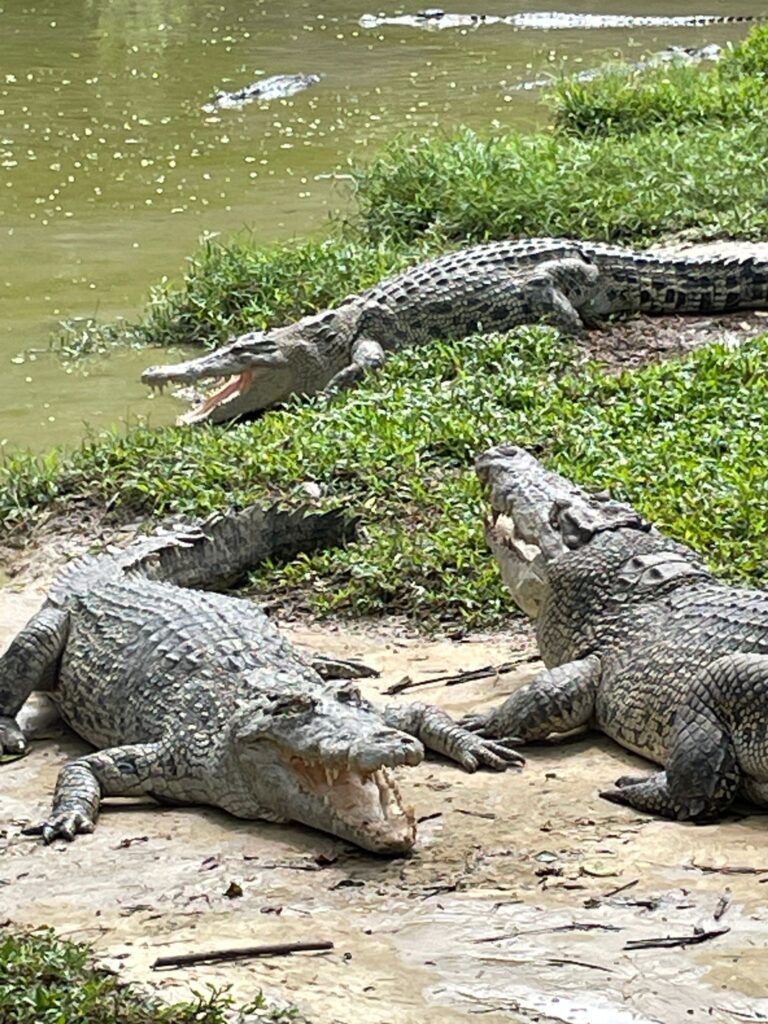
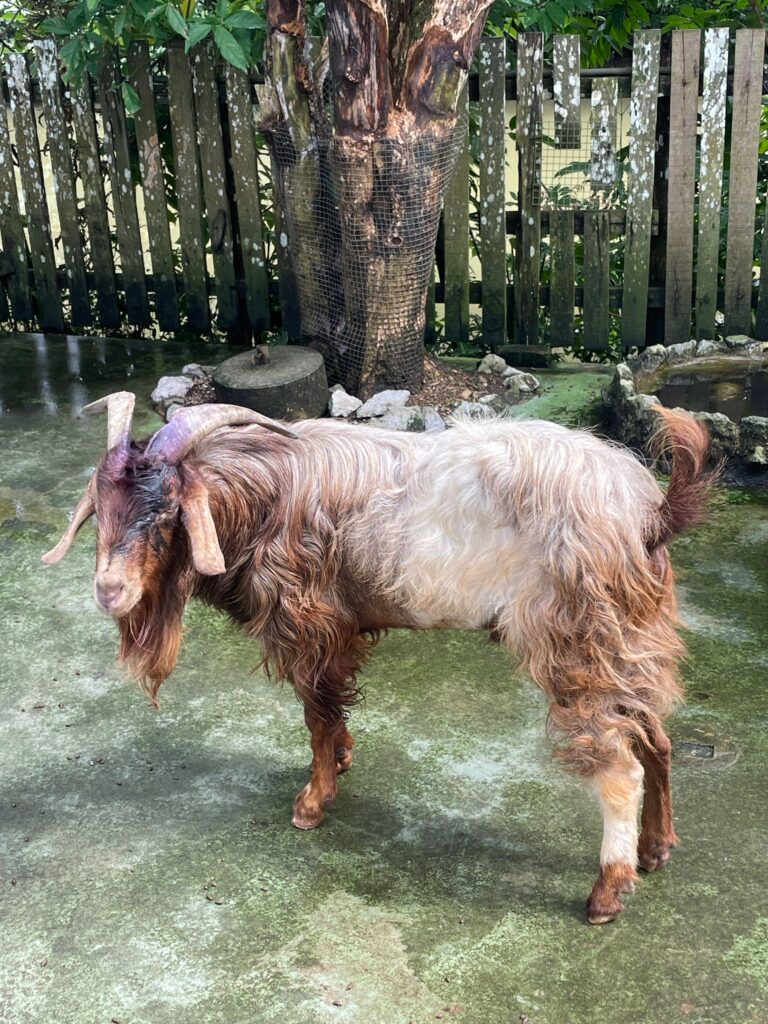
Winding Down in Kuching
Kuching has some quirky attractions alongside the river at night with bustling food markets, and entertainers dressed in animal suits posing for pictures (for a fee). Walking down the river and heading the call to prayer from the local mosque is also an enjoyable way to end the day.
I ended the night by sampling Malaysia’s popular dessert – ABC or Ais Kacang. This interesting creation combines a variety of ingredients barely known in the west. One ingredient that is known is sweetcorn. And personally I wasn’t too fond of this dessert… its cousin, the halo-halo in the Philippines was far superior. If you want a full list of ingredients, check out this Malaysian food blog.

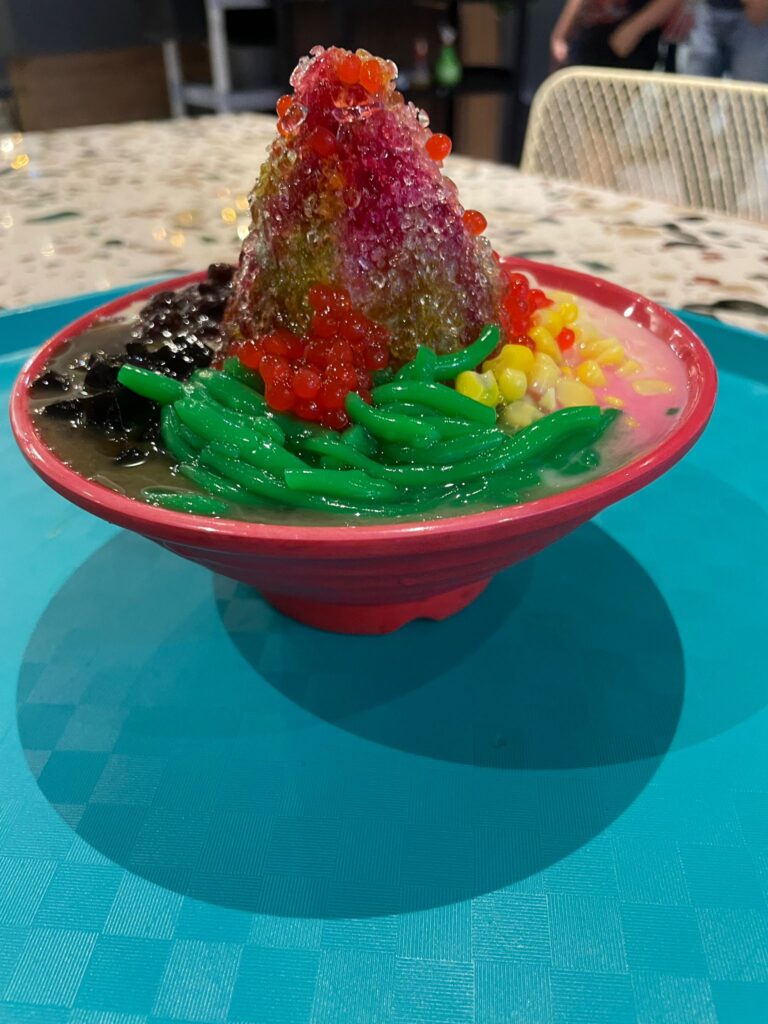
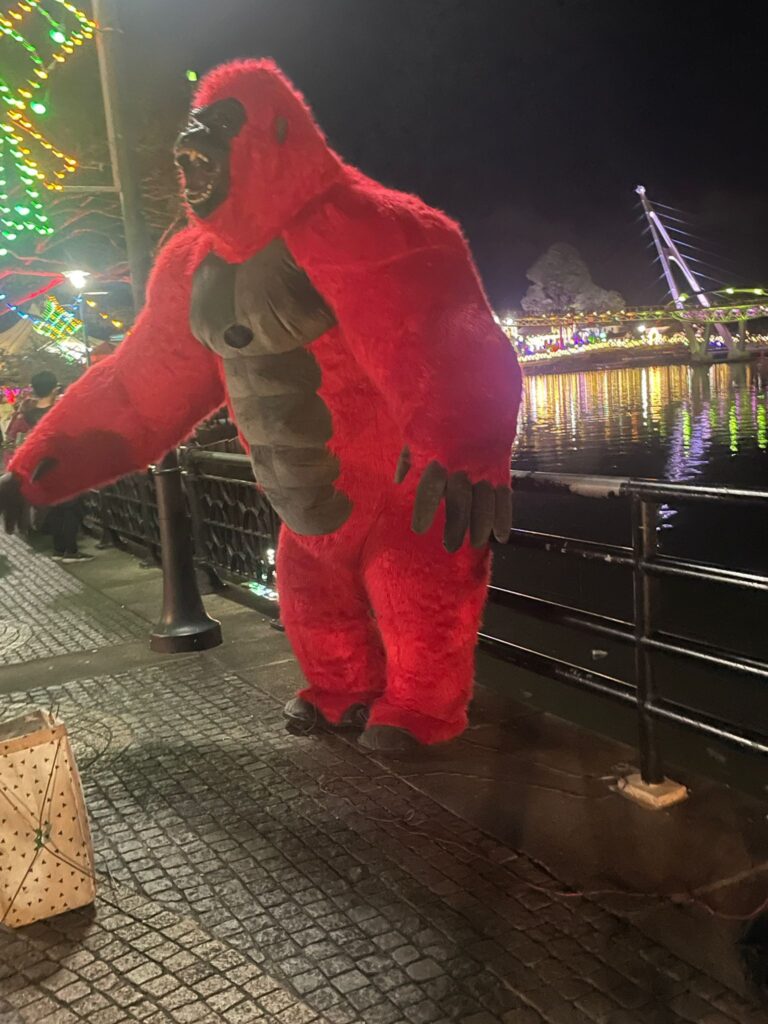
Return to Kuala Lumpur
My time on Borneo was cut short due to the need to chase a visa. Whilst I barely scratched the surface in terms of what to do in Borneo, it was still an incredible experience overall. A real “must” whilst visiting Malaysia.
I stayed in Bukit Bintang which has everything you could ever want. Outside there are many Arabic food stalls with shawarma and kanafeh in hefty supply.
A particular highlight was the Zaitoun stall, famous for its viral spaghetti ice cream. Staff would entertain on a nightly basis by dancing to the music and teasing customers with the lure of free samples. This was topped off by a guy serving Arabic tea from a comically oversized teapot. The stall attracted crowds on a nightly basis.
The Pavilion is a giant shopping centre with just about anything you could ever need. It’s seriously massive and super easy to get lost in. It has cheap food courts and luxury restaurants, a cinema and many bars. A Japan-themed “Tokyo Street” and a supermarket selling bird’s nests for over $500 are amongst interesting quirks found here. Yes, you read that correctly.
Edible bird’s nests are popular in Chinese traditional medicine due to perceived health benefits. My expertise lies in the wonderful world of travel and not bird’s nests unfortunately. However, if you wish to read more on this subject, I found this to be an interesting read.
Lastly, be sure to check out La Boca bar/restaurant if you miss Latam as much as I do! You will find churros, micheladas, ceviche, empanadas and more. Only the beer menu is a letdown. Stella and Carlsberg, come on…
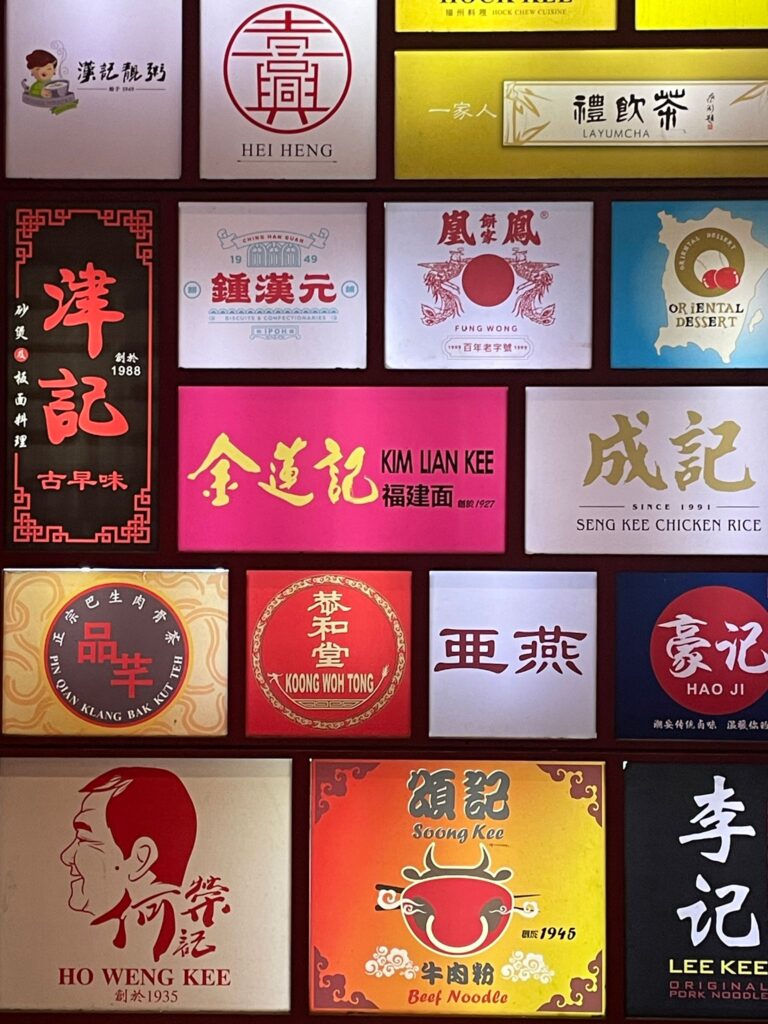
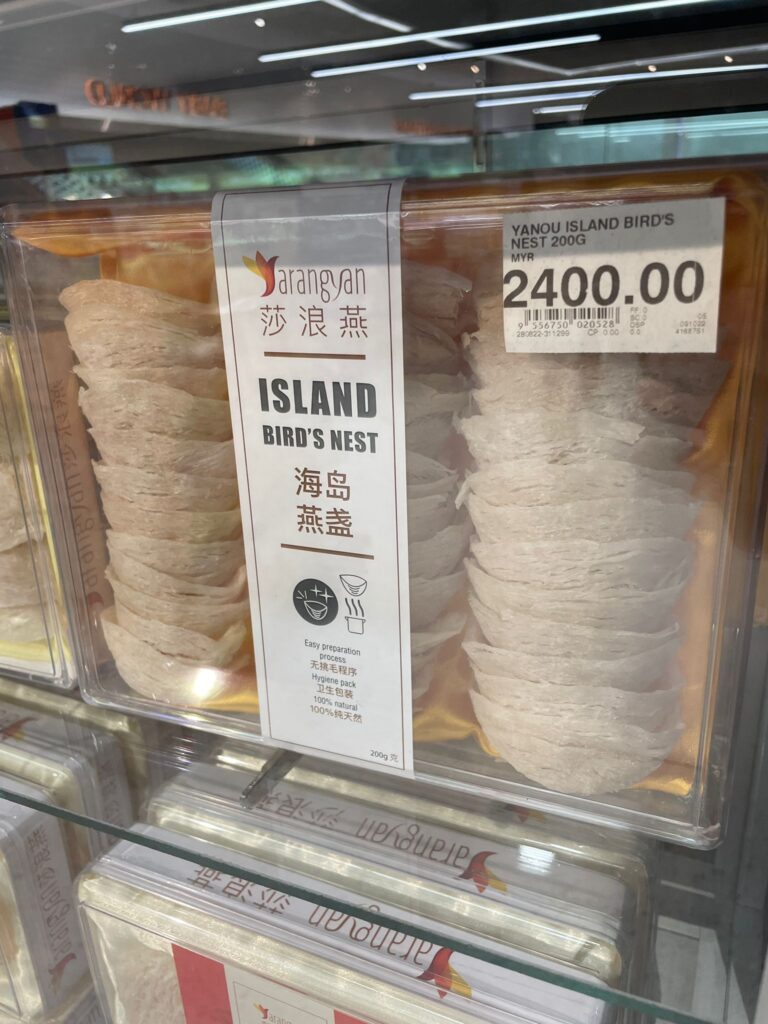

Football and Final Thoughts on Malaysia
I went to watch a match in Malaysian football’s top flight. This is a goal of mine in every country I visit. However Kuala Lumpur City vs Negeri Semblan wasn’t much to write home about. It finished 1-1 but had no real atmosphere unlike games I’d previously attended in nearby Vietnam and Thailand.
A handful of street food stalls stood outside the ground, but this wasn’t one of my number one football experiences in the world. Latin American countries dominate that list.
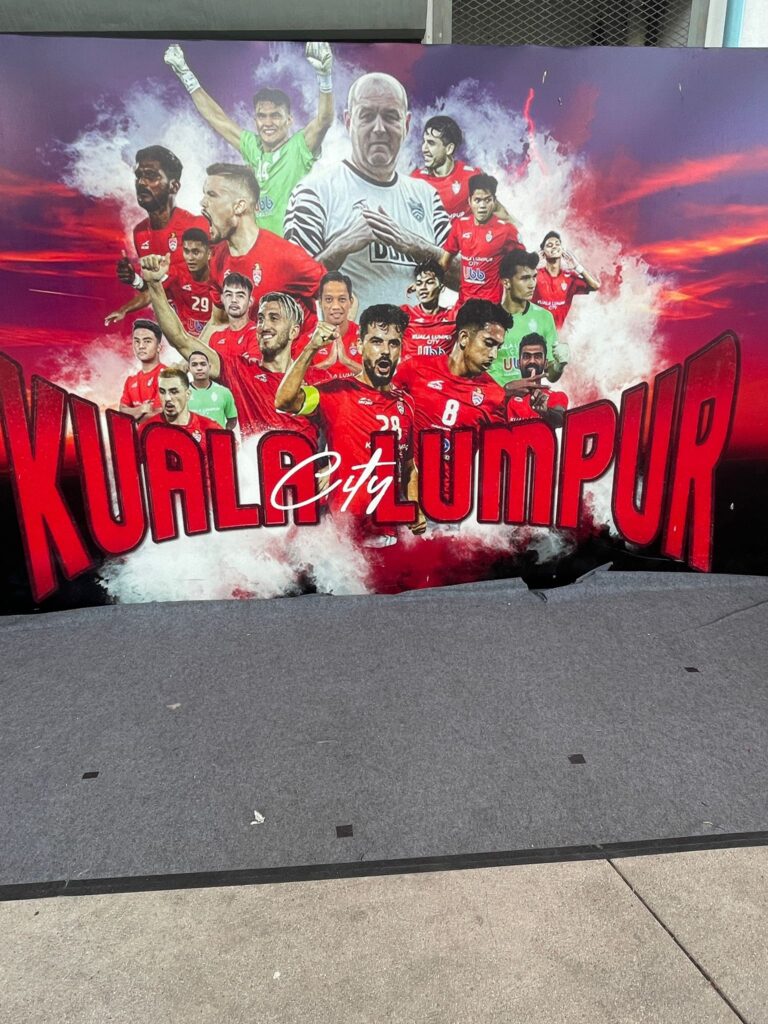
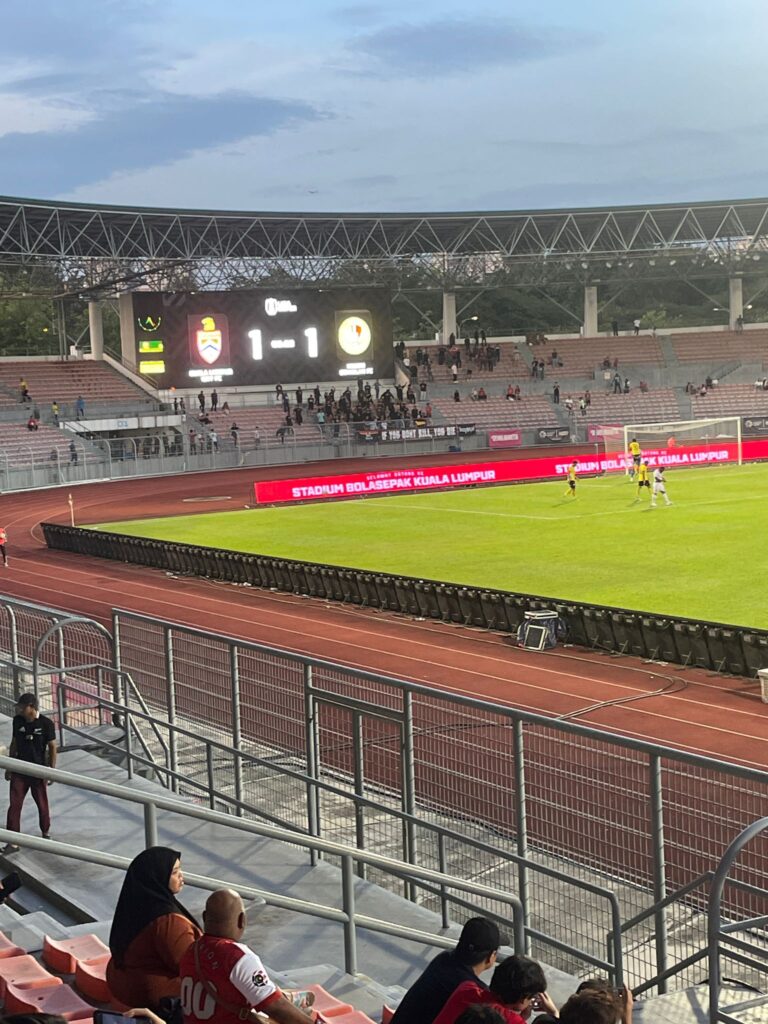

And that was the last major activity I did in Malaysia despite barely scratching the surface of this wonderful country.
Apparently there is a lot to see on the Western side of the country, outside of Kuala Lumpur. I gave this a miss due to logistics, timings, a trip to Myanmar which was the priority, and also little desire to see other cities and beaches with little to offer outside of what I have seen elsewhere. If Myanmar interests you, I have written a detailed logistics guide on how to visit Myanmar.
That said however, Malaysia is an absolutely fantastic country and one of my favourites in the world. Visiting Malaysia is an absolute must on any trip to Southeast Asia.
